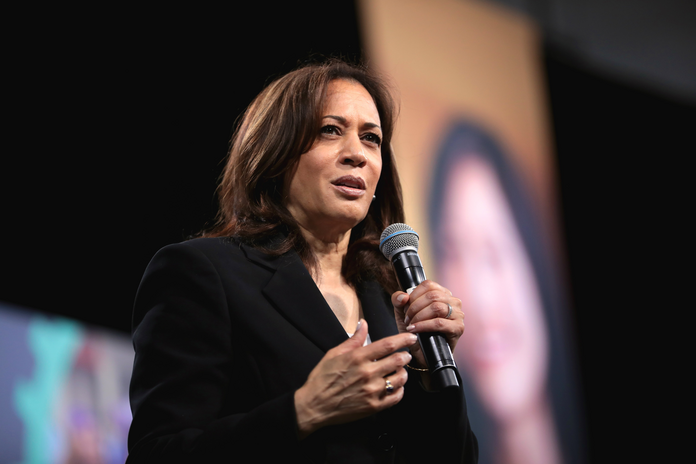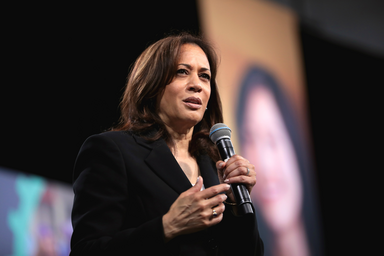The 2024 American presidential election marked one of the most consequential and polarizing
contests in recent history, pitting Vice President Kamala Harris against former president Donald
J Trump. Following Joe Biden’s decision to step down, Harris took his place as the Democratic
party’s candidate, seeking to make history as America’s first female president. Although Kamala
Harris was able to garner a large following and plenty of support, Trump ultimately won the
election by a large margin. This article will explore why, despite all the support she received,
Kamala Harris’ campaign strategy failed her.
One of the key reasons for Harris’ failure was her inability to clearly differentiate her platform
from that of Joe Biden. After Biden withdrew, Harris took up his mantle, inheriting a campaign
weakened by Biden’s unpopularity that was a result of his age and a flatlining economy.
Unfortunately for Kamala, her position as Vice President during such a taxing economic period
for the average American, meant that the people of America lacked confidence in her especially
when it came to tackling issues relating to the economy. According to exit polls, 51% of voters
trusted Trump more on economic issues than Harris, with many citing the economy as their top
priority. In September, a meeting with the International Brotherhood of Teamsters, one of the
most powerful workers unions in America, proved how Biden affected Harris’ campaign. The
union, for the first time since 1996, declined to endorse a Democratic candidate, due to unmet
expectations under the Biden administration (Hunnicutt, et al. 2024). This was a blow for Harris,
as it demonstrated how unpopular she was amongst the middle class Americans.
Another factor was the rushed and reactive nature of her campaign, which left little room for
strategic adjustments. With only a short window to build her campaign from the ground up,
Harris had to quickly manage a surge of donations, choose a running mate, and prepare for the
critical presidential debate. The urgency led to little time for refining her policies or expanding
her advisory circle. As a result, her campaign appeared insular and cautious, lacking the
flexibility needed to adapt to shifting voter concerns. The cautiousness also showed in her
media approach, as she waited over a month before getting an interview with major news
outlets, and even then, she opted to be interviewed by what most viewed as “safe” media. Ones
that wouldn’t ask the difficult questions. This created the perception that Kamala was avoiding
tough questions, and it reduced her visibility at a critical time where she could have been more
proactive in addressing voter concerns.
Additionally, her strategy to emphasize Trump’s inflammatory comments over detailing her own
policies proved to be a misstep. A quick visit to the Kamala HQ page on Tiktok will show you
plenty of Trump’s questionable quotes, but will still leave you wondering what exactly Kamala
plans to do once she’s in office. This painted her as more reactionary than solution oriented.
Avoiding specifics on her planned policies, particularly regarding key issues such as inflation
and immigration, was a method that she used to shield herself from media and republican
attacks. However, the decision left voters without clear answers as to how she would address
their pressing concerns. On the contrary, Trump’s campaign capitalized on these issues,
releasing targeted ads that painted Harris as a continuation of Biden’s unpopular policies.
Finally, the way Harris’ campaign engaged with voters through social media and outreach efforts
seemed more superficial than impactful. Many felt as though the wealthy celebrities she got to
endorse her could not relate to their struggle, and therefore had no business advising them on
who to vote for. And while the memes were entertaining, she could have used a balance
between posting fun content, and informative content that would give people a reason to want
to vote for her.
In the end, her campaign faced an uphill battle, hampered by structural and strategic issues, as
well as economic discontent. Though she inspired initial enthusiasm, Kamala’s failure to
address economic concerns, and lack of an adaptable campaign strategy made it difficult for her
to overcome Trump’s resurgent appeal. Her loss bummed me out personally, but fingers
crossed America sees a female president in the next election cycle.
Bibliography
Cadelago, Christopher and Otterbein, Holly (2024). ‘Why Kamala Harris lost the election.’
Politico. Available online: Why Kamala Harris lost the election – POLITICO
Hunnicutt, Trevor, and Kelly, Stephanie (2024). ‘Kamala Harris made a historic dash for the
White House. Here’s why she fell short.’ Reuters. Available online: Kamala Harris made a
historic dash for the White House. Here’s why she fell short. | Reuters


